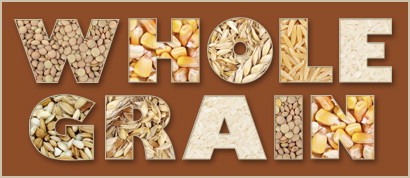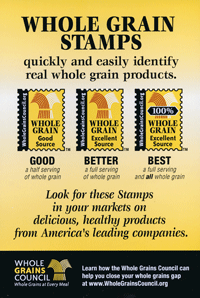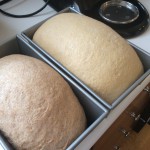Whole Wheat v. Whole Grain: What’s the difference and is one better for you than the other?
Well, in a perfect world, there would be no difference at all. If a label said “Whole Wheat” you would be able to assume that it contained all three parts of the wheat kernel:
- Bran: Outer coating or husk
- Endosperm: The part that we use to make white flour today
- Germ: The small inner kernel that forms a new wheat plant
Alas, marketers are geniuses at selling their product, and if they have to fudge the facts a bit to get you to buy something, they will. That means you can’t always trust a label that says, “Whole Wheat” on it.
The government has tried to regulate whole wheat package labeling, requiring manufacturers to use at least 51% whole grain flour in anything labeled “Whole Wheat.” But in this anti-regulation environment, that’s just not going to happen any time soon. We lag far behind Europe, where the label “Whole Wheat” requires at least 90% of the flour to be truly whole grain. In the Netherlands, it’s 100%.
So what can you do to find out if a product is truly Whole Wheat (i.e., using the whole grain)?
First, you have to recognize that, even if a manufacturer is voluntarily complying with current U.S. recommendations, he only has to use 51% whole grain flour to label his product “Whole Wheat.” Even if you see “100% Whole Wheat” it could just mean that the whole grain he used is 100% whole wheat – so you can’t always trust that either.
Look for the Stamp
There are two places you can look. One is the Whole Grains Council Whole Grains Stamp Program. This is a voluntary program for manufacturers who want to call out their own products for the amount of truly whole grains used in their product. Look for this stamp on the package:
Another place to look is on the Whole Grain Council’s web site. Here you can enter in a product category and name and find out how much whole grain is in the product. This site lists hundreds and hundreds of products, so you should have some luck there.
Also, just look on the nutrition label on the package for some telling information. Per serving, most truly whole wheat/whole grain products are going to have about 20 grams of whole grain. Anything less and you can know that it’s not 100% whole wheat/grain.
Dining Out?
And finally, if you’re eating out and want to know about a restaurant’s menu items, the Whole Grain Council also has an extensive list of restaurant menu items that contain whole grain or largely whole grains in their recipe.
There are dozens of studies that demonstrate the health benefits of consuming more whole grain and less bleached flour per day. There are no studies truly documenting the benefits of a percentage of whole grain in a particular food. So get the most bang for your buck by maximizing your whole grain intake. Know what’s in your food!







